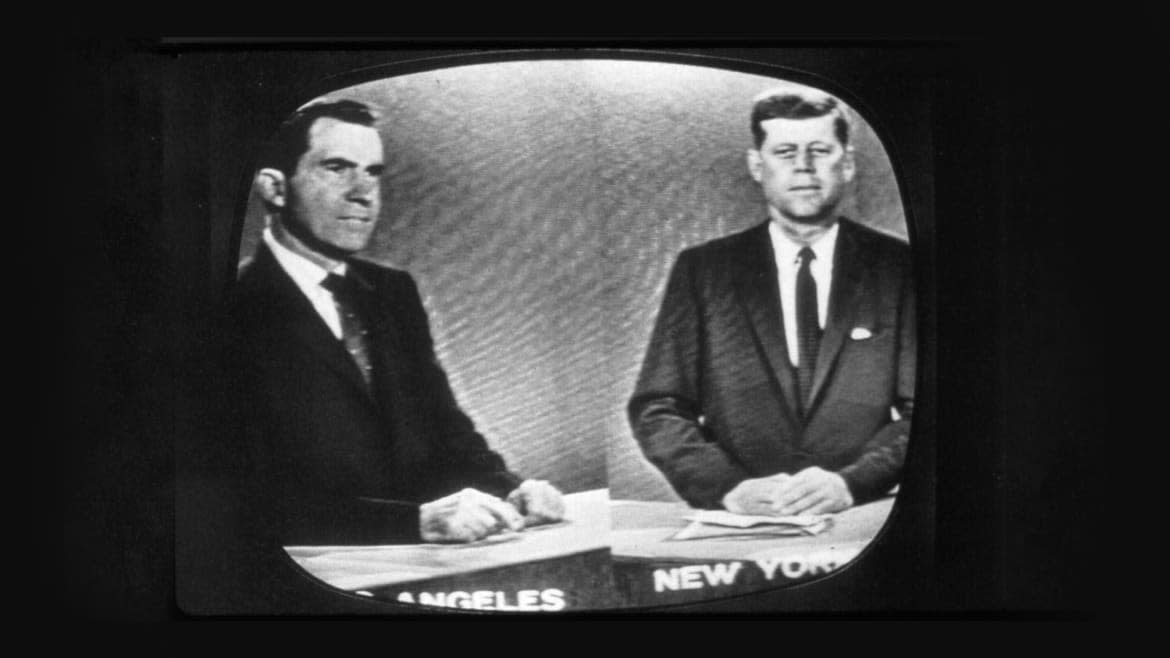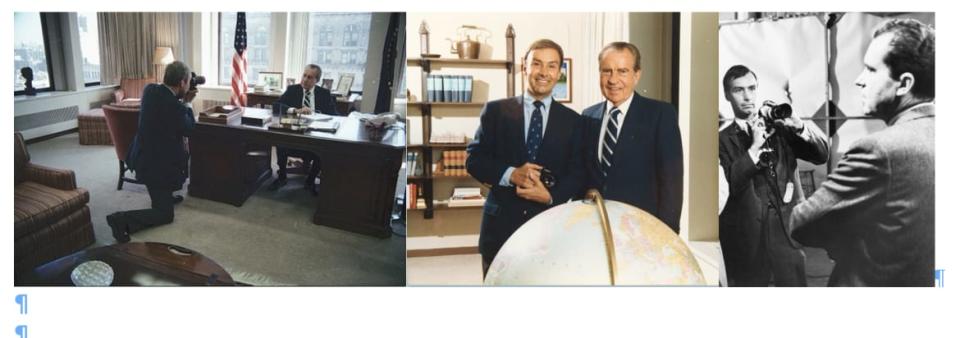He Photographed the First Televised Debate. Here’s What Trump and Biden Can Learn.

With the first 2024 general election debate between Joe Biden and Donald Trump scheduled for June 27, there’s considerable media attention on lessons learned from previous presidential debates—notably the very first one televised in 1960. The consequences of that matchup are still being discussed.
Decades after my husband, late TIME magazine photojournalist Ben Martin, photographed the first televised presidential election debate between U.S. Senator John F. Kennedy, the Democratic nominee, and Vice President Richard M. Nixon, the Republican nominee, he wrote about the experience—and his surprise at what a fresh look at the contact sheets years later revealed.
Ben and his friend and colleague, LIFE magazine photographer, Paul Schutzer, had been granted backstage access to the candidates prior to the debate held September 26, 1960, in Chicago, Illinois, at the studios of CBS's WBBM-TV. Here’s his recollections from the night, some of which Biden and Trump would be wise to parse themselves.
The Arrivals
Ben recalled that, “Jack Kennedy and his wife, Jacqueline, arrived at the studio in plenty of time to prepare for the debate. Jacqueline, who was pregnant with her third child, had even brought along a freshly pressed shirt for Jack because it was a hot and humid afternoon. Jack, looking fit and tanned from weeks of outdoor campaigning, had spent the weekend with campaign aides and advisers prepping and resting up for the debate.
“Less than twenty-minutes before airtime, Richard Nixon burst into the studio unshaven, sweaty and rumpled from campaigning all day in the hot sun. He was still recovering from knee surgery and a bout of pneumonia, and looked pale and underweight. He made the rash decision to decline a quick shave, makeup and a change of shirt.”
The Fateful Five O’Clock Shadow
“Paul Schutzer was shooting the debate for LIFE, and not wanting to duplicate the images, TIME’s editors asked me to ‘get something different,’ which prompted me to shoot the entire debate off the monitor in the control room,” Ben said. “My editors were delighted by the innovative effect, but the stark black and white image framed in the television monitor emphasized Nixon’s five o’clock shadow.

Kennedy and Nixon
“It was thought that radio listeners gave the edge to Nixon in the debate, while television viewers overwhelmingly considered Kennedy to be the winner. Ultimately it came down to visuals between Kennedy in a dark suit, appearing tanned, composed and radiating health, and Nixon in a gray, rumpled suit, sweating and looking nervous. TIME magazine only reinforced that impression by publishing one of my photographs of Nixon on the television monitor that made him look sweaty, bearded and shifty-eyed. Candidate Nixon accused TIME—and me, in particular—of costing him votes in the 1960 election. I’d photographed Nixon many times, beginning in 1952, when I was still a student at Ohio University. After the 1960 election, he made it exceedingly difficult for me, even when I was assigned to shoot him for a TIME cover story in 1968.”
Nixon’s Lesson Learned
“That made it all the more surprising when Richard Nixon tracked me down and called my home in London in 1985. It was soon after LIFE magazine had published a full-page photo of Nixon I’d taken years earlier,” Ben remembered.
Nixon told him, “Ben, I haven’t had an official portrait taken since I left office, so I was wondering . . . If we let bygones be bygones, would you be willing to fly to New York and photograph me for the book jacket of my biography?’
“Nixon stipulated that he wanted to be photographed at eight o’clock in the morning in his Manhattan office,” Ben said. “Early one morning a week later, my assistant and I were setting up the lighting when we heard a ‘zzzzz’ sound emanating from Nixon’s private office bathroom. The former President emerged brandishing an electric razor in his hand and said, “You’re not going to get me twice!”

Ben Martin and Richard Nixon
Changing History
Shortly after Richard Nixon passed away in 1994, Ben was preparing for an art gallery exhibit and came across the contact sheets and negatives from that 1960 debate. He was surprised when he spotted frames of CBS debate moderator, Howard K. Smith, with a five o’clock shadow, and Senator John F. Kennedy looking shifty-eyed—and shots of both looking as sweaty as Richard Nixon. Would it have made any difference in the outcome of the election if TIME magazine had published his photographs of the trio, he wondered?
Ben Martin (1930-2017) photographed three of the 1960 “Great Debates” for TIME magazine. His photographic archive is housed in Austin at the University of Texas’ Briscoe Center for American History.
Get the Daily Beast's biggest scoops and scandals delivered right to your inbox. Sign up now.
Stay informed and gain unlimited access to the Daily Beast's unmatched reporting. Subscribe now.